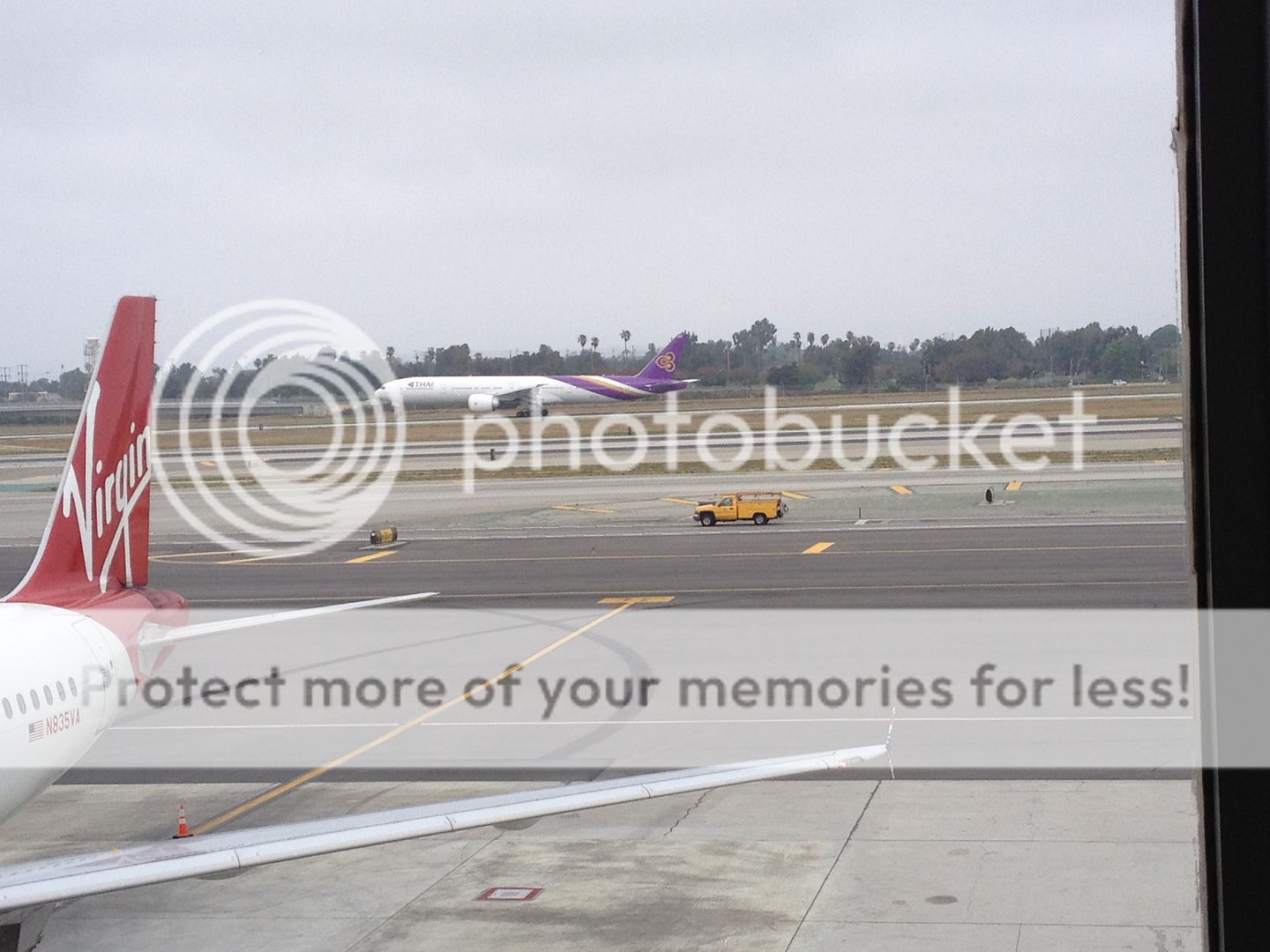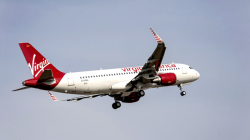
In a painful but necessary move, Thai Airways announced that it will be cancelling service to Los Angeles in October 2015, which is currently operated 4 times weekly to Bangkok via Seoul Incheon in each direction on a Boeing 777-200ER during the summer months, and Boeing 777-300ER during the winter months. Thai also will be cancelling its 4 weekly flights to Rome as it restructures its long-haul network to bed down a more consistent profitability strategy.
Current schedules for Bangkok – Los Angeles and Bangkok – Rome:
- Bangkok – Seoul Incheon – Los Angeles
TG692 BKK1340 – 2105ICN2220 – 1755LAX 77W x135
TG693 LAX2350 – 0615+2ICN0745+2 – 1130+2BKK 77W x135 - Bangkok – Rome
TG944 BKK0001 – 0555FCO 744 x246
TG945 FCO1330 – 0605+1BKK 744 x246
Thai’s departure further proves direct USA-ASEAN routes are unviable
Thai follows in the wake of Malaysia Airlines in axing service to Los Angeles, as both airlines could not viably operate nonstop routes from their respective hubs in Southeast Asia to Southern California due to high operating costs and low yields. Despite having the largest population of immigrants from the ASEAN countries, LAX receives little foreign carrier service hailing from Southeast Asia due to the tough market dynamics that renders it impossible to compete at profitable levels.
The only two airlines which will serve LAX in the future hailing from ASEAN countries will be Philippine Airlines (PAL) and Singapore Airlines (SIA). PAL operates 11 weekly nonstop services from Manila to Los Angeles, with a daily 777-300ER and a 4-weekly Airbus A340-300, and Singapore flies a daily direct flight to Los Angeles that makes a stoppover in Tokyo Narita utilizing an Airbus A380.
Both of these carriers have encountered their own respective difficulties in serving LAX in the past. PAL previously had to make a technical stop in Guam on its westbound flight from LAX to Manila in order to fly a fully-loaded 747-400 without weight restrictions due to winds. PAL has since phased out its 747 operations on its LAX route, which have enabled it to fly nonstop to LA from Manila in bi-directionally.
Singapore Airlines once operated a nonstop flight from LAX to Singapore, which was the second longest flight in the world, running from 2004 through 2013. This discontinuation (along with its nonstop Newark to Singapore route) was very high-profile given that SIA touts itself as one of the world’s most premium carriers and had expected that customers would favor the nonstop option over a 1-stop itinerary.
Thai has also experimented with ultra-long haul flights to LAX and New York from its Bangkok hub in the past. Thai launched nonstop flights from Bangkok to New York JFK and Los Angeles in 2005 utilizing Airbus A340-500 twin-engine widebodies. The New York flight was discontinued in 2008 amid soaring oil prices, and Los Angeles was restored to a 1-stop service in 2012 via Seoul (previously, Thai had flown to LAX via Osaka) and will now withdraw entirely from the U.S.
LAX cut was rumored given Thai’s poor financial conditions and FAA audit
Demand to Thailand, in particular, has been hit hard by the civil unrest in Bangkok over the past several years. Thai has also been battered hard by foreign carrier competition in its long-haul markets to Europe and North America, especially from the Gulf Coast carriers. Even though it is more circuitous to fly from the U.S. to Southeast Asia over the Middle East, the Gulf carriers tend to attract a lot of passengers by offering lower fares and greater scheduling options over 1-stop services in North Asia.
Thai has lost over $700 million USD in 2013 and 2014, although it managed to squeek out a profit in Q1 2015 after cancelling several long-haul routes to Johannesburg and Moscow. Thai will also end service to Madrid in September 2015 and shelved plans to launch Dusseldorf in late 2014. Once Rome and Los Angeles are cut, Thai’s long-haul network will be reduced to 15 nonstop markets: London Heathrow, Frankfurt, Paris, Oslo, Stockholm, Copenhagen, Munich, Milan, Brussels and Zurich in Europe, and Auckland, Perth, Melbourne, Sydney and Brisbane in Oceania.
Reductions to Thai’s long-haul network will likely not be as drastic as Malaysia’s, which has curtailed services to 12 long-haul markets in the past decade (Los Angeles, Newark, Buenos Aires, Johannesburg, Cape Town, Istanbul, Cairo, Stockholm, Rome, Frankfurt, Zurich, Vienna), although it is possible that Thai will trim capacity to some of its European markets in the future.
Thai is also undergoing a FAA safety audit after receiving notifications from the ICAO that significant safety concerns had been found during a prior audit conducted earlier this year. Thailand’s aviation oversight had been given a 90-day period to address certain issues by the ICAO, which were not addressed and therefore flagged the country as likely to receive a downgrade to Category II level restrictions by the FAA. A Category II classification prevents foreign carriers registered in a specific country from adding services to the U.S., increasing capacity on existing services and code-sharing with any U.S. carriers on the route.
Cited among the reasons for the sub-standard safety ratings were a shortage of qualified staff to carry out safety inspections within Thailand, outdated safety inspection methods and manuals, as well as staff training.
Given the high unlikelihood that Thai was intending on adding service to the U.S., and the mere fact that it does not codeshare with any U.S. carriers, the impact of the Cat II restrictions would have been minimalized somewhat. However, the limitations on fleet and seating adjustments would have been more pronounced. Given that Thai alternates between a higher-density 777-300ER and a 777-200 on its LAX route, it would have had to stick with a 777-200ER year-round (as that is what is curently utilized to LAX).
Star Alliance will still have a major presence in Thailand via partners
Thai will continue to offer decent connection opportunities via Star Alliance partners in North Asia to flow traffic to the United States. Thai has codeshare agreements with South Korea-based Asiana Airlines and All Nippon Airways in Japan, which will certainly help fill in the void for passengers connecting over Seoul or Tokyo to reach Thailand and vice-versa.
This will also prove to indirectly benefit United, which has a metal-neutral joint venture agreement with ANA. It is noteworthy that United and Thai do not codeshare at all despite being two of the founding members of Star Alliance. United also served Bangkok from its Tokyo Narita hub for many years until it axed the route in 2014. Neither United nor Thai were willing to formulate any agreements on Thai’s existing routes between Tokyo and Bangkok, as the two felt that this could be accomplished via ANA since the scope of United’s JV agreement with All Nippon extends to intra-Asian routes from Tokyo.
Still, a United partnership would have been beneficial for Thai’s U.S. operations, but United has also seen its market share in Los Angeles slowly dwindle as competitors American Airlines and Delta beef up domestic capacity in LAX. To that point, a codeshare agreement with United may have been seen as moot from Thai’s vantage point. Even Malaysia Airlines did not codeshare with any U.S. carriers on its now-extinct LAX route despite being a member of the OneWorld alliance, nor does Singapore Airlines with United.
Leaving behind its legacy in the U.S. will be anything but “Smooth as Silk”
There is little evidence against the popular belief that Thai’s Los Angeles operation was highly unprofitable, but maintained due to political purposes. The unfortunate reality is that Thai’s financial outlook is in facing another year of dire straights unless the bleeding can be stopped. Undoubtedly, a 4-weekly operation that competes against two powerful competitors (Korean Air and Asiana) between Los Angeles and Seoul does not stand a chance in today’s environment.
It is unknown whether Thai will keep its local sales offices in Los Angeles when it discontinues its U.S. routes, even though it is likely widely used for local distribution purposes for Thai expats living in Southern California.
The larger concern, however, is the outcome of the safety audits, which is already treading on thin ice as the FAA has given Thailand 60 days to address outstanding gaps in its aviation safety standards. The likelihood that Thailand will be able to meet this deadline is highly debatable, and its quite plausible that Thai saw this as an opportune moment to pull the plug on its LAX route altogether. News of an airline failing to pass safety audits always takes a hit on advance bookings and public perception. Although sub-optimal, the downgrade can help Thai break the fall just a bit since its Los Angeles route is very high-profile. Either way, saving face will be tough for Thai, regardless of where the cards fall.

